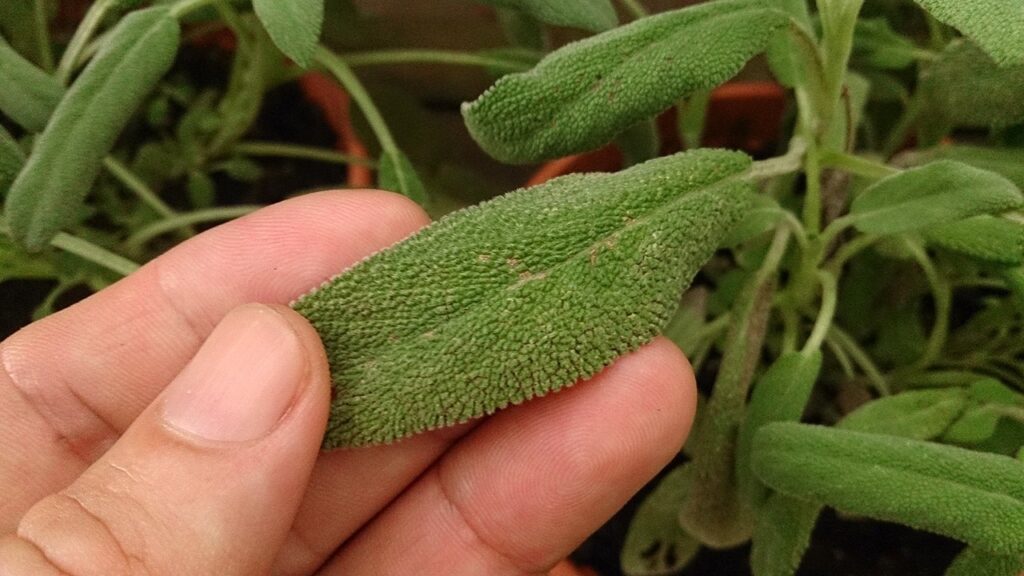Golden Sage, Salvia officinalis ‘Aurea’ is a member of the Salvia family.

The name Salvia comes from the Latin salvere, meaning to be well or in good health.
While most of us are familiar with sage in the kitchen, the family name indicates just how highly valued it is medicinally and has been for centuries right up to today
Its compact, dense growth makes it an excellent border plant. Golden Sage is also very decorative with green leaves edged with gold. The leaves are so bright they almost seem to glow in the dark! Whether lining a pathway, adorning a container or in the vegetable and herb garden the leaves are always ready for harvest and can be used immediately or dried for future use.
Golden Sage can be substituted in any recipe calling for Sage. Fresh leaves make an attractive garnish for roast chicken or turkey. A simple recipe idea is to stuff thickly cut pork chops with a few sage leaves and an apple wedge. Sprinkle with cinnamon or nutmeg, pepper and onion salt. Place in dish and cover with orange juice or cider and cook until done.
Like most Garden Sages, it is a short lived perennial that should be replaced every second or third year. It forms a 1.5- to 2-foot-tall and wide bush with woody stems that may be trimmed back to newly emerging growth or strong stems in spring. In early to mid-summer, it occasionally sends up lavender-purple flower spikes; it has both ornamental and culinary qualities in an herb garden. It tolerates alkaline soils, but not wet winter conditions.
Beautiful, delicious and useful, Golden Sage requires little pampering in the garden. The compact plants thrive in full sun and require infrequent watering once established.
